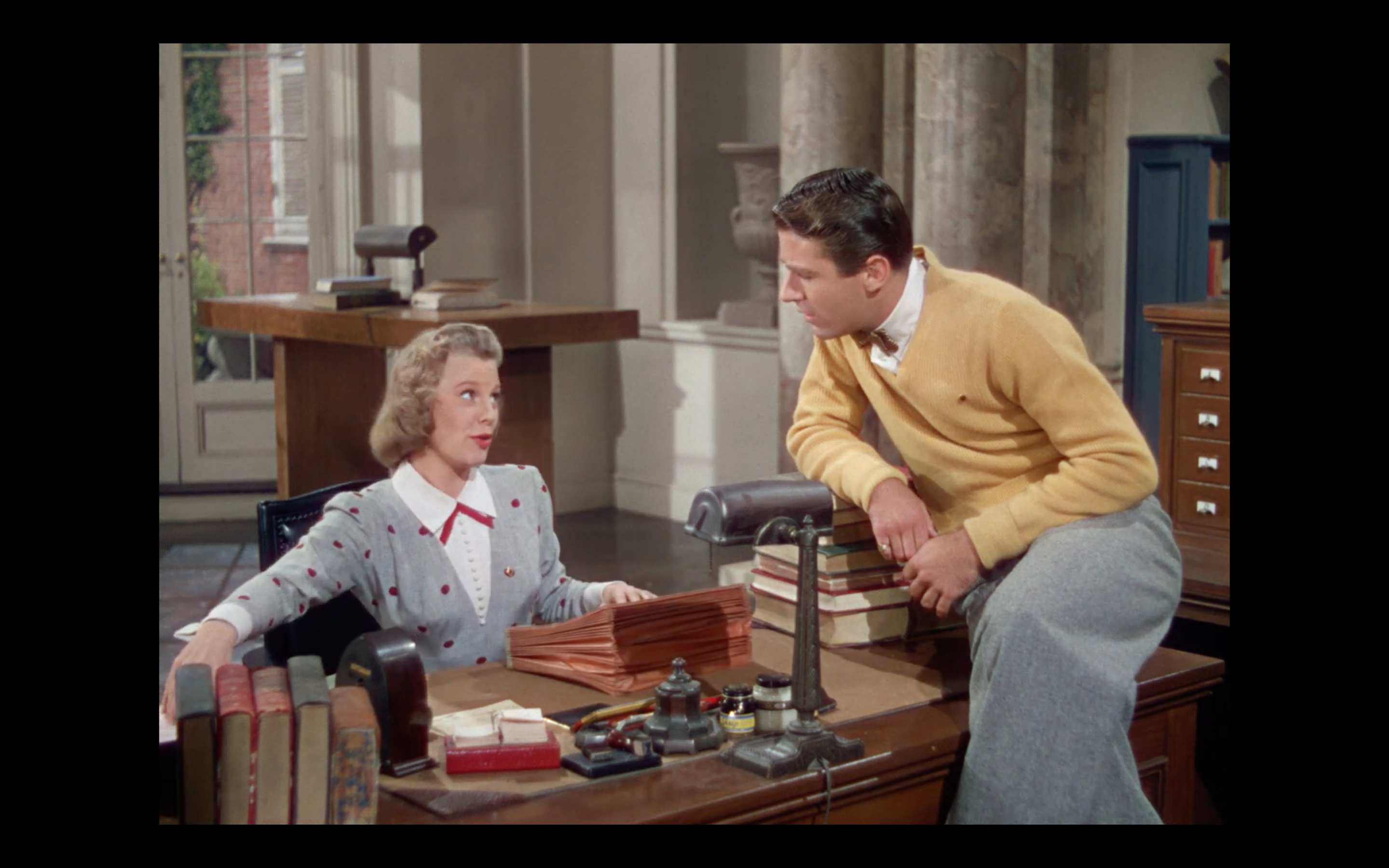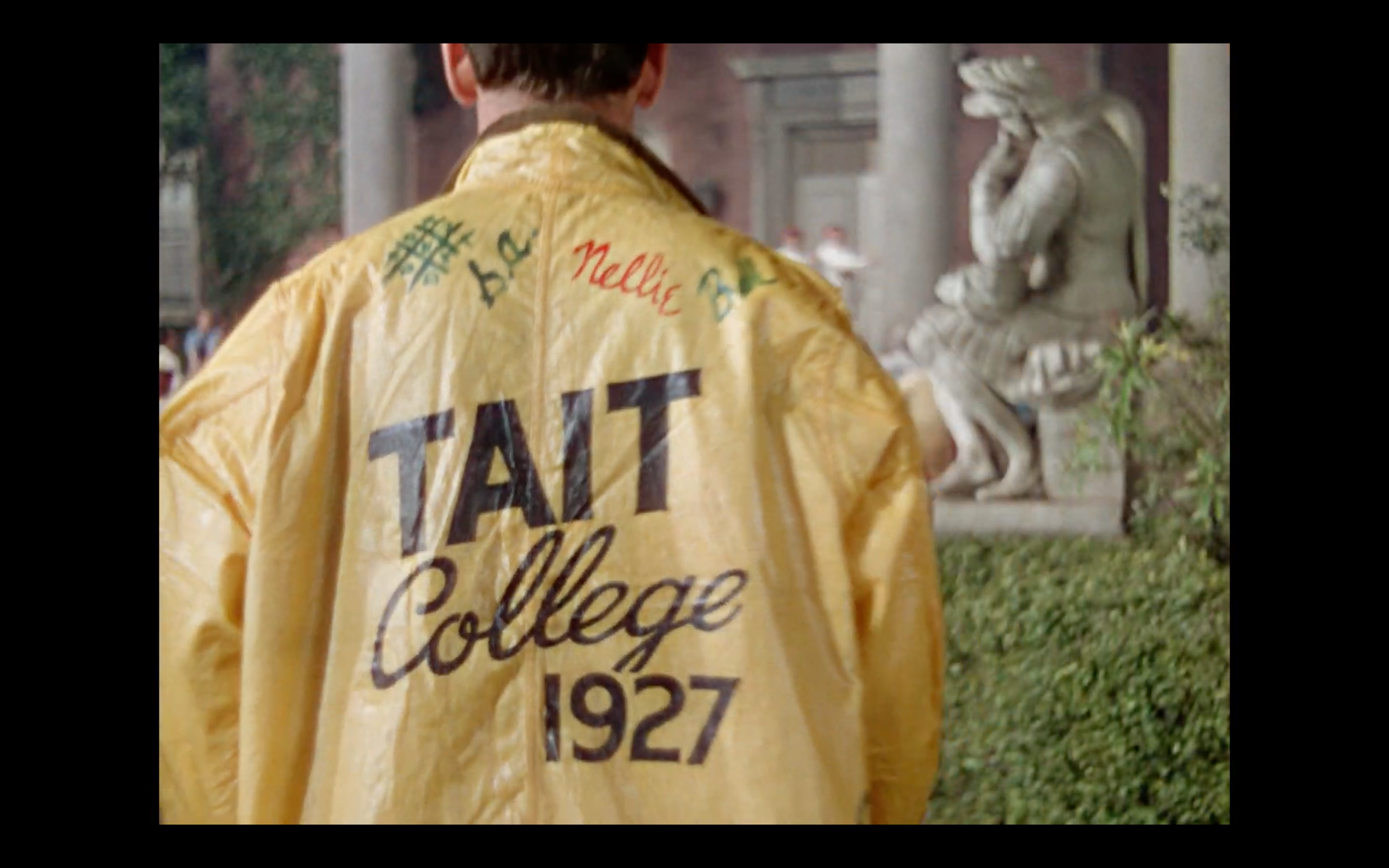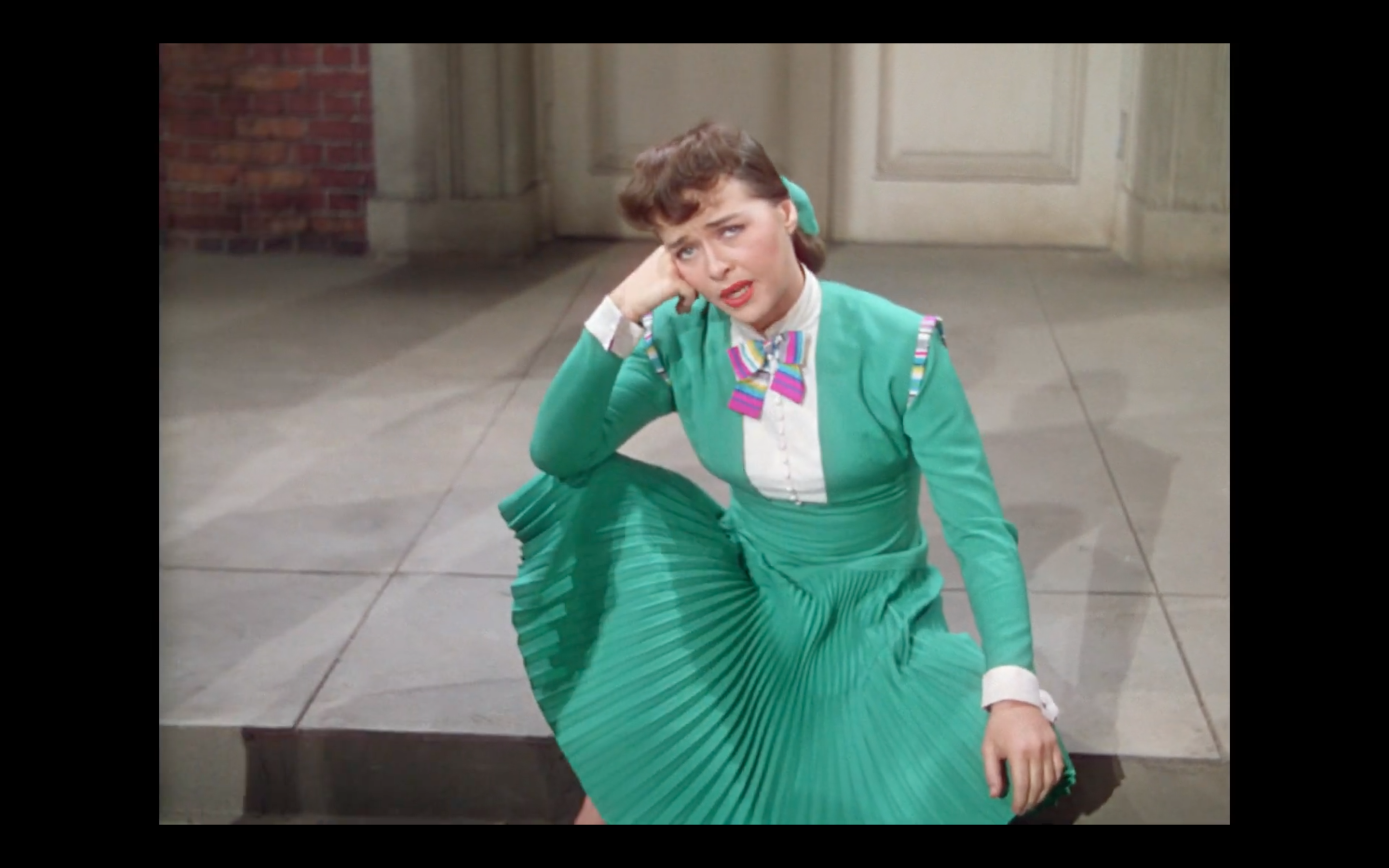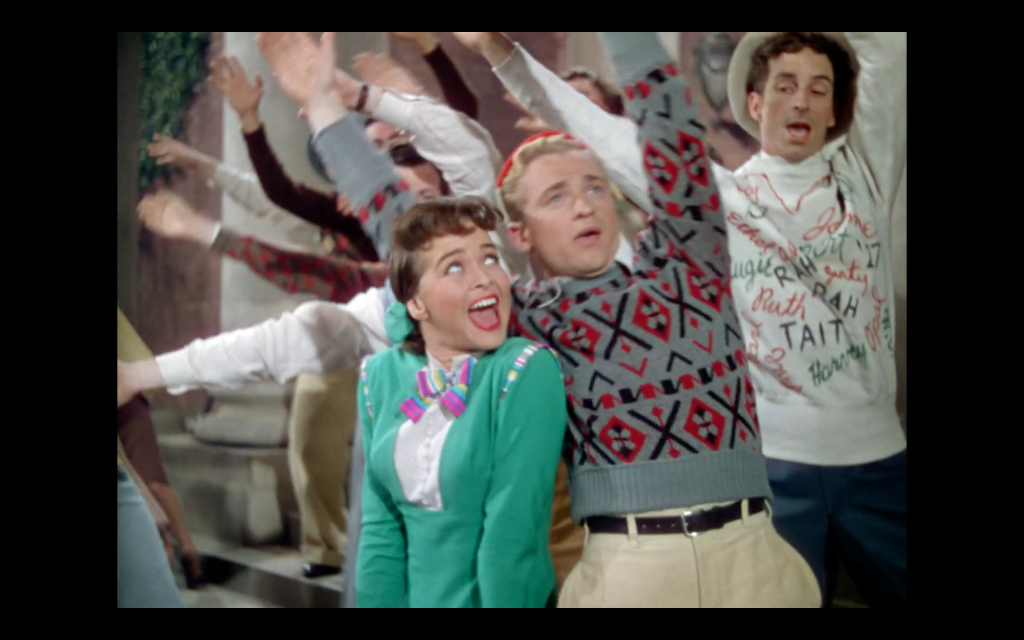One of the old mainstays of classic Hollywood was the college musical, which gleefully followed a prescribed formula which audiences could rally around and feel comforted. A prime example of this is the bouncy 1947 MGM Technicolor musical Good News, an adaptation of the 1927 stage production of the same name. While the film is preceded by a black-and-white Pre-Code adaptation from 1930, this 1947 version is by far the more popular version thanks to notable turns from June Allyson (The Opposite Sex) and Peter Lawford (The Longest Day). Good News is also notable for being a sizzling debut from director Charles Walters, who would go on to craft such hits as Easter Parade, Summer Stock and The Unsinkable Molly Brown. The film may not be one at the top of the tongue of every modern musical lover, but the film remains a ball of energy that will bring some joy to anyone who might need a little extra.
From a story standpoint, Good News is nothing too radical or exciting. Set on the campus of the fictional Tait College in 1927, the setting feels as idyllic as anything one could ever dream up. The sun is shining bright on this impeccably manicured campus where few individuals seem to have much of anything to cause concern. The gentlemen are all reasonably good-looking if not a bit indistinguishable. All of the women are silver-screen-ready in their vibrant, colorful dresses. The topic de jour is focused almost equally on the upcoming “big game” and the excitement from courting the opposite sex. When football star Tommy Marlowe (Peter Lawford) has his advances rebuffed by new girl Pat (Patricia Marshall), he buckles down to learn French so he can impress her. Tommy will be tutored by part-time school librarian Connie Lane (June Allyson), who may actually be a better fit for him than his original romantic interest. The plot plays out in the most predictable manner, which is exactly what this type of movie is supposed to do.

The reason for the movie’s existence and all anyone is really worried about is the irresistible music. The production is not without a couple of duds, “Be A Ladies’ Man” was an early miss for me personally, but the majority of the tunes are real toe-tappers that are staged quite well. “Lucky In Love” and “The Best Things In Life Are Free” both take up residence in your brain long after the movie has ended. Allyson is not always up to the task of providing a beautiful vocal performance, but she always makes sure to make up from any shortcomings through sheer charm and exuberance. With as lovely as she is, the breakout of the film is the dynamite Joan McCracken as Babe. She is primarily relegated to being the comic relief, but she steals every scene she is in. The high point of the film is the Oscar-nominated “Pass That Peace Pipe” that finds McCracken taking lead with pitch-perfect vocals and unimpeachable dancing. The only drawback to this impossibly-catchy performance is the inherent cultural insensitivity that go hand-in-hand with the lyrics. Why did THIS song have to be so fun?
As a college musical, Good News does everything it needs to do with gusto. MGM typically seemed to know what they were doing when they commissioned a new musical adaptation, and when you look at the screen you can see how much of an effort was put into the production. The rousing final number “Varsity Drag” really brings the film home with a bustling communal excitement that is hard to resist. Seeing all of these dancers synchronized and swirling together to create something so beautiful is genuinely quite moving. The story is not going to set the world on fire, but the performances bring enough depth to the characters that you do not feel completely emotionally detached from the story. If you are a fan of classic Hollywood musicals and have never seen this one, you are in for a real treat. Good News seems primed for a rediscovery from hungry audiences tired of the same old song and dance.

Video Quality
Warner Archive presents Good News with a stunning new 1080p master transfer sourced from a 4K scan of the original nitrate Technicolor negatives. Classic film fans always clamor for Warner Archive to release more Technicolor pictures, and it is easy to see why. The film features some luscious colors within the costumes and set design that pop off the screen with an immense vibrancy. The level of detail and clarity throughout is very impressive with a pleasing amount of film grain intact. The film is almost entirely free of dirt and damage, which makes it feel all the more timeless. There does not appear to be any pesky digital nuisances such as compression artifacts, banding or any other such anomalies. The black levels are also stable and deep throughout. This presentation earns top marks from Warner Archive on all fronts.
Audio Quality
The Blu-Ray comes with a DTS-HD 2.0 Master Audio track that is of the highest quality. With music being the driving force of the film, it is wonderful to report that the track handles these elements beautifully. There are moments where some of the higher notes border on sounding a bit shrill, but it is quite possible that this could be an attribute of the singing and not the track. Normal dialogue comes through crystal clear from beginning to end. The track balances these vocals with numerous crowd scenes and the accompanying music with magnificent clarity. Warner Archive has provided a great audio track that does not exhibit any glaring signs of age-related wear-and-tear. The disc also comes with optional English (SDH) subtitles.

Special Features
- Deleted Musical Number – “An Easier Way”: A five-minute song that was excised from the film by the studio to avoid slowing down the pace of the film. This is a really enjoyable number mostly tackled by June Allyson with Patricia Marshall assisting. This is a great inclusion on the disc that would have felt right at home in the film.
- “Varsity Drag” (1930 Excerpt): A nearly six-minute excerpt from the 1930 adaption of Good News is presented here in rough standard definition. The differences in the versions are stark but fun to witness.
- “Good News” (1930 Excerpt): Another five-minute excerpt from the 1930 adaption of Good News is presented here in rough standard definition. In the titular tune you have 21-year-old Dorothy McNulty, who would later change her name to Penny Singleton and achieve fame as the star of the Blondie movie series and as the voice of Jane Jetson.
- MGM Radio Promo with June Allyson: A nearly five-minute audio interview with star June Allyson that serves as a fascinating glimpse at old Hollywood promotion. This feels even more manufactured and promotional than late night talk shows are today. This is honestly my favorite supplement on the disc.
- Theatrical Trailer: The nearly three-minute trailer is presented which includes excerpts from the various hit songs from the film while shining a spotlight on all of the actors involved in the picture.
Final Thoughts
Good News is an exuberant little musical filled with extremely catchy numbers and dazzling choreography. June Allyson and Peter Lawford put in fine lead performances, but it is the incredible Joan McCracken that is the true breakout of the film. Warner Archive has provided a brand new Blu-Ray with a stunning A/V presentation and several interesting special features. If you are a fan of classic MGM musicals, it is hard to see how you would walk away disappointed. Recommended
Good News can be purchased directly through Warner Archive or various other online retailers. The Blu-Ray will be officially released on January 26, 2020.
Note: Images presented in this review are not reflective of the image quality of the Blu-Ray.
Disclaimer: Warner Archive has supplied a copy of this disc free of charge for review purposes. All opinions in this review are the honest reactions of the author.

Dillon is most comfortable sitting around in a theatre all day watching both big budget and independent movies.







